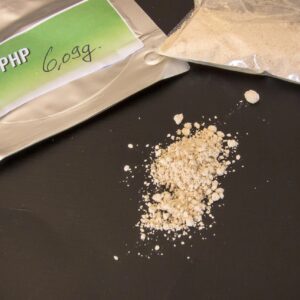Lysergamide
Lysergamide: Understanding Its Properties, Uses, and Legal Status
Lysergamides are a class of chemical compounds derived from lysergic acid, a natural compound found in certain fungi like Claviceps purpurea (ergot). Known for their psychoactive and therapeutic potential, lysergamides have been the focus of research in pharmacology, neuroscience, and psychotherapeutic applications. In this article, we delve into the structure, effects, uses, legal considerations, and safety profile of lysergamides.
What Are Lysergamides?
Lysergamides are amides of lysergic acid, structurally related to the well-known compound lysergic acid diethylamide (LSD). They belong to the broader family of ergoline derivatives and exhibit a wide range of biological effects, primarily on the central nervous system.
Chemical Structure
The core structure of lysergamides consists of a bicyclic ring system with an indole nucleus fused to a six-membered piperidine ring. Substituents on the amide group can drastically alter their pharmacological properties.
History of Lysergamides
Lysergamides gained prominence in the mid-20th century when Albert Hofmann synthesized LSD while researching medicinal compounds derived from ergot. Since then, various analogs have been developed to explore their effects and potential medical applications.
Popular Lysergamides and Their Effects
Several lysergamides are studied for their psychoactive and potential therapeutic effects, including:
-
LSD (Lysergic Acid Diethylamide):
-
Effects: Potent hallucinogen causing changes in perception, mood, and thought.
-
Applications: Used in psychedelic-assisted therapy and creativity studies.
-
-
1P-LSD:
-
A prodrug of LSD with similar psychoactive effects.
-
Often used in research and for recreational purposes in jurisdictions where LSD is restricted.
-
-
AL-LAD (6-Allyl-6-nor-Lysergic Acid Diethylamide):
-
Exhibits a gentler psychedelic experience compared to LSD.
-
Known for its vivid visual effects and shorter duration.
-
-
ETH-LAD (6-Ethyl-6-nor-Lysergic Acid Diethylamide):
-
Produces intense visuals and cognitive stimulation.
-
Studied for its potential therapeutic applications.
-
Therapeutic Potential of Lysergamides
Recent studies suggest that lysergamides might have significant therapeutic benefits. Some key areas of research include:
-
Treatment of Mental Health Disorders: Lysergamides, especially LSD, show promise in addressing depression, anxiety, and PTSD through psychedelic-assisted psychotherapy.
-
Cluster Headaches: LSD and its analogs have been reported to alleviate symptoms of cluster headaches, earning the moniker “medicine for the mind.”
-
Addiction Treatment: Early research indicates that lysergamides may help individuals overcome substance dependencies, including alcohol and nicotine.
Mechanism of Action
Lysergamides primarily act as agonists at serotonin (5-HT2A) receptors, influencing mood, perception, and cognition. They may also interact with dopamine and adrenergic receptors, contributing to their complex effects.
Safety and Risks
While lysergamides are generally considered safe in controlled settings, there are potential risks, including:
-
Psychedelic-Induced Anxiety: High doses may cause overwhelming psychological experiences.
-
Hallucinogen Persisting Perception Disorder (HPPD): Rare cases of lingering visual disturbances have been reported.
-
Legal and Ethical Concerns: Unauthorized use of lysergamides may lead to legal consequences and ethical considerations in research.
Legal Status
The legality of lysergamides varies by country. While some, like LSD, are controlled substances in many regions, certain analogs such as 1P-LSD remain legal in specific jurisdictions due to their novel chemical structure. Researchers should verify the legal framework in their region before working with these compounds.
Future Prospects of Lysergamides
As interest in psychedelics grows, lysergamides are expected to play a significant role in the evolving landscape of mental health treatment and neuropharmacology. Continued research could unlock new therapeutic applications and deepen our understanding of consciousness.
Conclusion
Lysergamides represent a fascinating class of compounds with profound implications for science, medicine, and society. Whether for their psychoactive properties or potential therapeutic benefits, they remain at the forefront of psychedelic research. However, responsible use, adherence to legal regulations, and further investigation are essential to fully realize their potential.
FAQs:
Q1: What is the primary effect of lysergamides?
Lysergamides primarily affect perception, mood, and cognition, often inducing psychedelic experiences.
Q2: Are lysergamides legal?
The legal status varies by compound and jurisdiction. LSD is a controlled substance in most countries, while some analogs may be unregulated.
Q3: Can lysergamides be used in therapy?
Yes, ongoing research explores their use in treating mental health disorders like depression and PTSD.
Q4: What are the risks of using lysergamides?
Potential risks include anxiety, HPPD, and legal repercussions if used outside regulated frameworks.
For more information, consult reputable sources and stay updated on current research trends.
Showing all 4 results
-
Lysergamide
Buy 4F-MPH PELLETS 25MG (RITALIN) Online
€140.00 – €810.00Clear100 pellets250 pellets500 pellets1000 pellets -
Lysergamide
Buy MDPHP HCL Online
€200.00 – €5,200.00Clear20grams50grams100grams250grams500grams500grams 1KG




